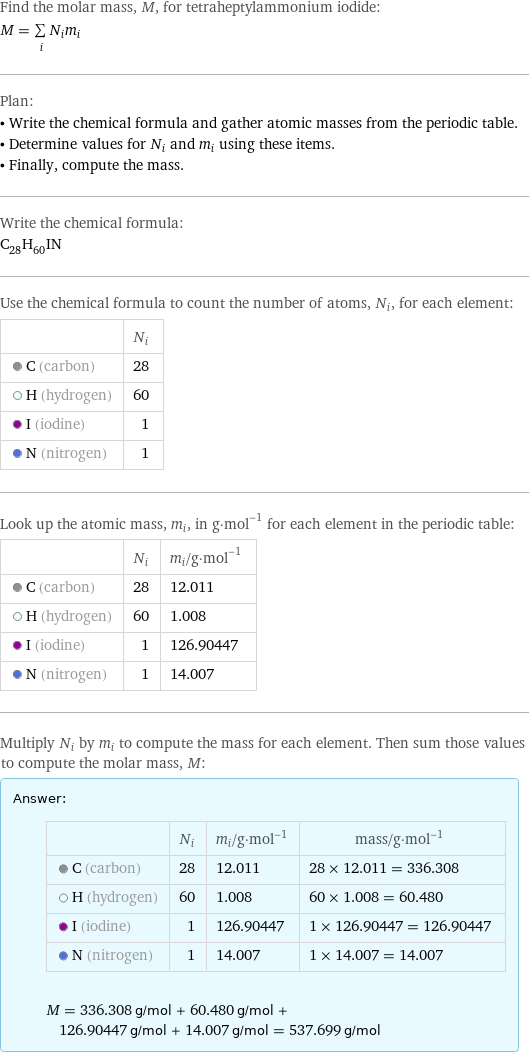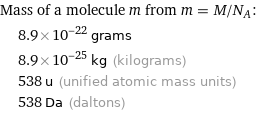Input interpretation

tetraheptylammonium iodide | molar mass
Result

Find the molar mass, M, for tetraheptylammonium iodide: M = sum _iN_im_i Plan: • Write the chemical formula and gather atomic masses from the periodic table. • Determine values for N_i and m_i using these items. • Finally, compute the mass. Write the chemical formula: C_28H_60IN Use the chemical formula to count the number of atoms, N_i, for each element: | N_i C (carbon) | 28 H (hydrogen) | 60 I (iodine) | 1 N (nitrogen) | 1 Look up the atomic mass, m_i, in g·mol^(-1) for each element in the periodic table: | N_i | m_i/g·mol^(-1) C (carbon) | 28 | 12.011 H (hydrogen) | 60 | 1.008 I (iodine) | 1 | 126.90447 N (nitrogen) | 1 | 14.007 Multiply N_i by m_i to compute the mass for each element. Then sum those values to compute the molar mass, M: Answer: | | | N_i | m_i/g·mol^(-1) | mass/g·mol^(-1) C (carbon) | 28 | 12.011 | 28 × 12.011 = 336.308 H (hydrogen) | 60 | 1.008 | 60 × 1.008 = 60.480 I (iodine) | 1 | 126.90447 | 1 × 126.90447 = 126.90447 N (nitrogen) | 1 | 14.007 | 1 × 14.007 = 14.007 M = 336.308 g/mol + 60.480 g/mol + 126.90447 g/mol + 14.007 g/mol = 537.699 g/mol
Unit conversion

0.5377 kg/mol (kilograms per mole)
Comparisons

≈ 0.75 × molar mass of fullerene ( ≈ 721 g/mol )

≈ 2.8 × molar mass of caffeine ( ≈ 194 g/mol )

≈ 9.2 × molar mass of sodium chloride ( ≈ 58 g/mol )
Corresponding quantities

Mass of a molecule m from m = M/N_A: | 8.9×10^-22 grams | 8.9×10^-25 kg (kilograms) | 538 u (unified atomic mass units) | 538 Da (daltons)

Relative molecular mass M_r from M_r = M_u/M: | 538